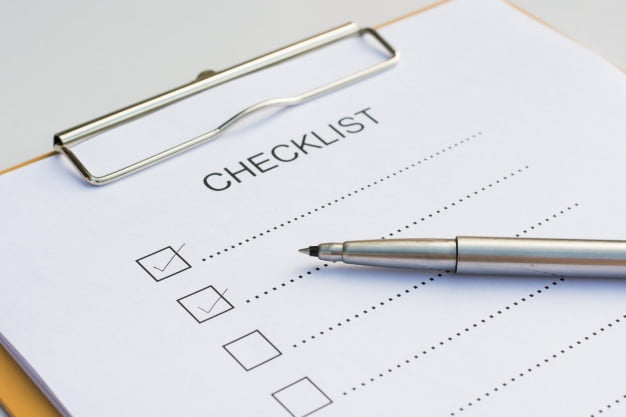Table of Contents
- Format for Report Writing
- 1. Title page
- 2. Acknowledgments
- 3. Reference (optional)
- 4. Abstract/Summary
- 5. Contents Page
- 6. Introduction
- 7. Methods/Methodology/Procedure (optional – if not covered in the introduction)
- 8. Discussion/Main body (the longest part of your report)
- 9. Outcomes (can also go before the main body of the report)
- 10. Conclusion
- What makes a great a report?
- Last thoughts
- FAQs
You may be required to write reports at school or as part of your job. These reports can be formal or informal, as well as long or short. The style and vocabulary you use should be determined by who will be reading the report and their level of knowledge or expertise. But regardless of the style you choose, your report should be clear and succinct, with material structured logically into parts, complete with headers and (if necessary) subheadings. So before we get to what makes a good report, let’s look at the format you should use when writing a report.
Format for Report Writing
Reports address a specific situation. In it, you need to state why it is worthy of research, while also citing other studies on the subject. You will also have to describe your research methods, evaluate the findings, and finally, make conclusions or recommendations.
Not all reports follow this exact format. Some include more headers, while others omit a few titles. Listed below are the different sections of a report. You may choose to add or delete a section depending on the layout recommended to you.
But if you are unsure about what format to employ, consult your lecturer (at university) or find out what your company’s recommended layout is.
1. Title page
This should include the title of your report, your name, the date, and academic information (the name of your course and instructor).
2. Acknowledgments
Be sure to credit any person or piece of work that assisted or provided you with information. These can be colleagues, experts, academics, and even libraries and research papers.
3. Reference (optional)

This defines the scope and limitations of your report, as well as your writing goal and audience.
4. Abstract/Summary
This contains the objectives (if you don’t include the reference section), main findings, conclusions, and recommendations. It basically shares the most important aspects of your report in a nutshell.
5. Contents Page
This section includes all of your steps in report writing. Such as sections and subsections, page references, as well as a list of diagrams or illustrations, and appendices.
6. Introduction
Your introduction addresses the reason you are researching the topic, the context and goals of your research, your research methods, and a brief about the outcome.
7. Methods/Methodology/Procedure (optional – if not covered in the introduction)
This section should include how you conducted your research, including the techniques, equipment, and procedures you employed.
8. Discussion/Main body (the longest part of your report)
This section contains the analysis and interpretation of your findings (often linked to a current theory or previous research), which should be divided into headings and subheadings for clarity. You can also include visual information, such as diagrams, illustrations, charts, and so on, in this section.
9. Outcomes (can also go before the main body of the report)
Here, you can add your research findings (also presented in tables, etc.), but with no discussion or interpretation of them.
10. Conclusion

This section shares your discoveries from the findings – your deductions and the most important revelations from your research report writing. Ideas for improvement, which can also be part of the conclusion section, will be under a subheading called ‘Recommendations,’ in a number-format.
What makes a great a report?
1. Use names and pronouns
When writing about yourself and others on the scene, use names and pronouns (I, he, she). Avoid clichés like “this officer,” “the above-mentioned person,” and “officials.” Certain people argue that using impersonal terminology ensures objectivity and accuracy, but this is not true. You have the same level of integrity whether you refer to yourself as “I” or as “me.”
2. Present only one idea per sentence
Short, simple sentences are easier to read and understand, and they save everyone’s time. They are especially important when someone is reviewing your report writing in preparation for an important business meeting. Furthermore, the longer a sentence is, the more likely it is that you will make an error writing it.
In English, a short sentence and its structure usually begin with a noun, and the grammar is simple. Complicated sentences, on the other hand, necessitate confusing punctuation and invite sentence errors. So try to keep your sentences to a maximum of three commas. If a sentence contains more than three commas, it is likely to be too complicated to read with ease.
3. Be clear and specific
Strive for clarity at all times. For example, “contacted” is a broad term. Instead of using it, clarify if you paid the witness a visit, called, or sent an email. So is “residence.” Is it better to use in a house, an apartment, or a mobile home? If yes, do so!
4. Use straightforward language
“Since” is more understandable (and easier to write) than “as much as.” Another example is the phrase “pertaining to” which is a fancy (and time-wasting) way of saying “about.”
5. Stick to verifiable facts.
Educated guesses, hunches, and other thought processes have no place in report writing. So limit yourself to the facts. In court, a statement like “He was aggressive” will not be accepted. Instead, “Jackson clenched his fists and kicked a chair, which now sits broken” is acceptable.
6. Use more paragraphs
Organizing information in groups has two significant advantages- it will make your report more logical, and easier to read and understand at a later stage.
7. Have an active voice
A common misconception is that using the passive voice ensures objectivity and accuracy. However, this is not the case, especially when you’re expressing yourself with clarity. So always use an active voice – it will not only give you room for objectivity, but also make your report more readable.
8. Make use of bullet points

Bullet style is simply the way you have probably been writing shopping lists your entire life. When recording several pieces of related information, use bullet points as your format. This will make it easier for the reader to comprehend information.
Last thoughts
If you have come all the way here, here are a few bonus tips–
- Make sure you read your report again and again so you can edit it for flow and readability.
- Pay close attention to whether all of the information you have included is relevant.
- Remember to double-check your tenses, pay attention to the voice (active/passive) you have written in.
- Also, remember to check your grammar, spelling, and any structure requirements.
- Make sure that you have referenced everything completely and correctly for report writing.
- And lastly, check that you have not inadvertently or deliberately copied anything without acknowledging it.
FAQs
Q1. How do I begin writing a report?
Answer- To start, use the thesis you created and place it at the end of your introductory paragraph. Build your first paragraph around the main purpose of your thesis, and then guide the reader through the report’s main themes. Continue through your outline, transferring the body and conclusion points into a draft.
Q2. What are the four different types of reports?
Answer- There are 4 different types: long, short, internal & external.
Q3. What characteristics distinguish a good report?
Answer- A good report should have the following characteristics: simplicity, clarity, brevity, positivity, punctuation, approach, readability, and accuracy.
Feel free to check out our blog for more such tips.
Happy writing!






